Key Takeaways:
- Slicker brushes can be safe and comfortable for cats when used correctly.
- Understanding your cat's coat type and skin sensitivity is crucial for a pain-free grooming experience.
- Regular grooming with the right tools can promote a healthy coat and skin for your cat.
Grooming is an essential part of pet care, especially for our feline friends. Cats are known for their self-grooming habits, but they still need a helping hand to keep their coat in top condition. One common tool used by cat owners is the slicker brush, but there's a question that often arises: are slicker brushes painful for cats?
This comprehensive guide will delve into the world of cat grooming tools, focusing on the slicker brush, to ensure your pet's comfort and health.
Understanding Your Cat's Coat
Before we can address the comfort level of slicker brushes, it's important to understand the different types of cat coats. Long haired cats, such as Persians and Maine Coons, have thick fur that can easily become matted without proper care. Short haired cats, on the other hand, have a coat that's generally easier to maintain but still requires attention to remove loose hair and prevent shedding.
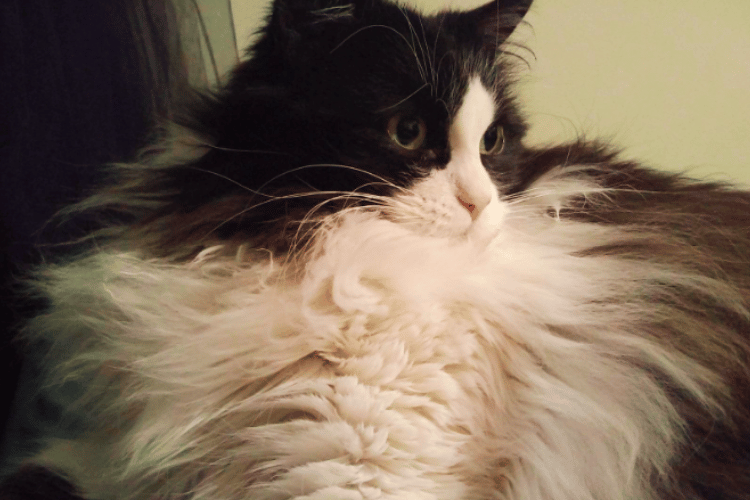
The Slicker Brush Explained
A slicker brush is designed with fine, wire bristles that are angled to effectively remove loose fur and detangle matted fur. The brush head is typically rectangular and can cover a significant portion of the cat's body during grooming sessions. But the question remains: are slicker brushes painful for cats?
Slicker Brushes and Cat Skin Sensitivity
Cats have delicate skin that can be sensitive to brushing. When using a slicker brush, it's important to apply gentle pressure to avoid causing discomfort or skin irritations. Sensitive cats may require a more gentle cat brush, such as those with softer bristles or a rubber brush.
The Right Technique for Slicker Brushes
Using a slicker brush correctly is key to ensuring it's not painful for your cat. Gentle strokes and avoiding excessive force will help prevent any discomfort. It's also important to regularly clean the brush to prevent pulling on the cat's hair.
Choosing the Best Cat Brushes
When selecting cat grooming tools, consider a variety of brushes to suit your cat's needs. A good cat brush can be a slicker brush for removing loose hair, a pin brush for gentle detangling, or a grooming comb for working through thick fur. The best cat brushes are those that your cat feels comfortable with and that effectively maintain their coat healthy.
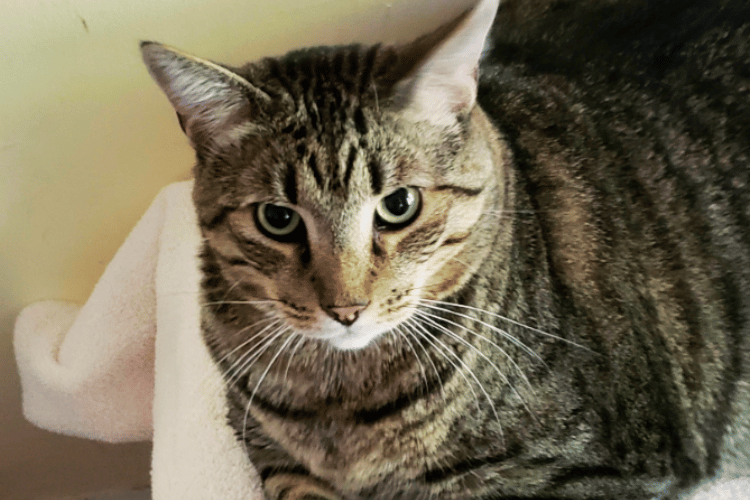
Alternatives to Slicker Brushes
For cats that don't tolerate slicker brushes well, there are alternatives. Soft bristle brushes, grooming gloves, and grooming combs can be good options for cats with sensitive skin or those who prefer a more gentle touch.
The Role of Professional Groomers
Sometimes, the best option for maintaining your cat's fur is to seek the help of a professional groomer. They have the experience and tools, such as the self-cleaning slicker brush or the Furminator Undercoat Deshedding Tool, to handle even the most challenging grooming tasks without causing pain to your cat.
Grooming Long-Haired vs. Short-Haired Cats
When it comes to grooming, not all cats are created equal. The needs of a long-haired cat are quite different from those of a short-haired cat. For the former, a brush that can reach deep into the cat's undercoat is essential.
This is where tools with stainless steel teeth can be particularly effective, as they are adept at removing excess fur without harming the cat's skin. However, it's important to use them gently to avoid any discomfort.
On the other hand, a short-haired cat might benefit more from a soft bristle brush or grooming glove. These tools are great for removing loose hair and can provide a gentle massage that cats love, promoting relaxation and bonding. They also help to distribute natural oils across the cat's coat, enhancing its natural sheen. Regardless of hair length, the best cat brush is one that suits your pet's specific needs while keeping them comfortable and happy.
Grooming Techniques for Different Coat Types
When it comes to grooming, not all cat coats are created equal. For a long-haired cat, the grooming process is often more intensive due to the volume and length of the cat's fur. These cats may require daily brushing to prevent mats and tangles, and a slicker brush can be a great tool for gently working through the cat's coat without causing discomfort.
On the other hand, a short-haired cat typically requires less grooming and may do well with less frequent brushings. However, even short-haired breeds benefit from the removal of loose hair and stimulation of the skin, which promotes a healthy, shiny coat.
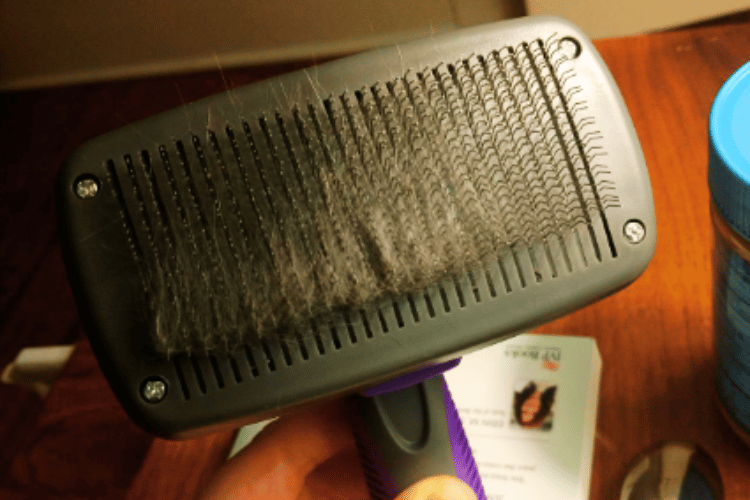
In addition to the length of the cat's hair, the density and texture of the cat's undercoat also play a role in the grooming routine. Some cats have a thick undercoat that can trap dirt and oils, while others have a sparse or non-existent undercoat. Understanding the specific needs of your cat's coat type will help you choose the right grooming tools and techniques.
For instance, a rubber grooming glove might be sufficient for a cat with a thin undercoat, while a slicker brush followed by a fine-toothed comb might be necessary for a cat with a dense undercoat to prevent matting and maintain the health of the pet's body.
Grooming and Bonding: Strengthening Your Connection with Your Cat
Caring for your cat's coat does more than just keep them looking their best; it can also strengthen the bond between you and your feline friend. When you use a slicker brush gently on your cat's skin, you're not only smoothing out their fur but also providing them with a comforting experience that can mimic the affection they received from their mother's grooming. This can help build trust and a deeper connection, as your cat begins to associate your touch with feelings of security and contentment.
Moreover, grooming sessions offer a unique opportunity to check your cat's entire body for any signs of health issues, such as lumps, bumps, or skin irritations. By regularly running a slicker brush through your cat's hair, you become familiar with their body and can quickly notice any changes that may require a vet's attention. This proactive approach to your pet's body care can lead to early detection of potential health concerns, ensuring your cat stays happy and healthy.
The Intricacies of a Cat's Undercoat
Cats are fascinating creatures, and their coats are no less intriguing. The undercoat, which is the layer of fine, fluffy hairs lying beneath the visible topcoat, plays a crucial role in regulating a cat's body temperature.
For long-haired cats, this undercoat can be particularly dense, making them more prone to matting and tangles. Regular grooming with a slicker brush can help remove loose hairs from the undercoat, preventing mats and keeping the cat's fur smooth and healthy.
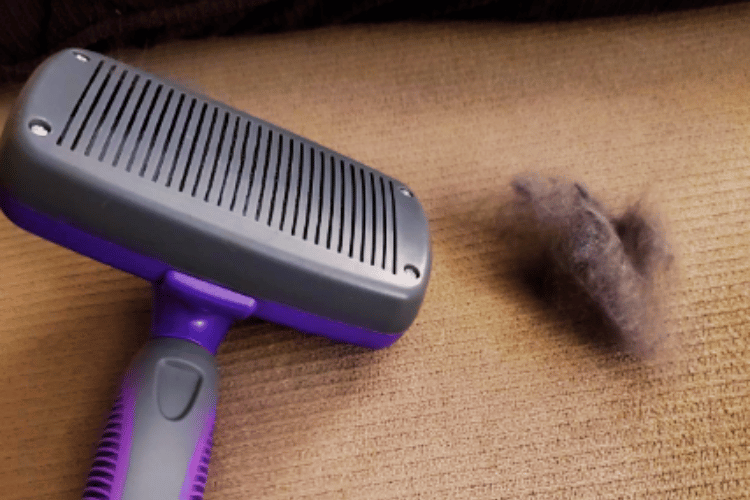
In contrast, short-haired cats have a less pronounced undercoat, but that doesn't mean they don't require attention. Their sleek coats can still benefit from the occasional pass of a slicker brush to remove dirt and loose fur.
This not only helps to maintain the cat's hair in top condition but also minimizes shedding around the home. Whether your feline friend is a fluffy Persian or a sleek Siamese, understanding and caring for their undercoat is key to their overall well-being.
The Significance of Diet in Maintaining Your Cat's Coat
A cat's diet plays a pivotal role in the health and sheen of its coat. Just like the right nutrients can enhance human hair, the proper balance of vitamins, minerals, and fatty acids is essential for maintaining the luster and health of your cat's fur.
Omega-3 and Omega-6 fatty acids, for instance, are known to promote a glossy coat and support skin health, reducing the likelihood of skin irritations that can make grooming uncomfortable. High-quality cat food brands often highlight these ingredients, understanding their importance in a cat's diet.
Moreover, hydration is just as crucial for a cat's skin and coat health. Cats that don't drink enough water may end up with dry, flaky skin, which can be sensitive to brushing. Encouraging your cat to drink more water, perhaps by using a cat water fountain, can help maintain the skin's elasticity and resilience.
This, in turn, makes the grooming process with tools like slicker brushes more comfortable for your pet's body, ensuring that the act of grooming does not cause undue stress or pain to your feline friend.
The Importance of Understanding Cat's Skin and Coat Types
When it comes to grooming, not all cats are created equal. The diversity in a cat's coat and cat's skin can greatly influence the type of care they require. For instance, a long-haired cat may be more prone to matting and tangles, necessitating a gentler approach with tools like slicker brushes.
Understanding the specific needs of your cat's fur type is crucial for maintaining a healthy and shiny coat. Whether your feline friend has a plush undercoat or a sleek topcoat, each strand of cat's hair plays a role in their overall well-being.
On the other hand, short-haired cats often require less intensive grooming but can still benefit from regular brushing to remove loose hair and stimulate the skin. Paying attention to the nuances of your cat's entire body during grooming sessions can help you spot any irregularities early on, such as lumps, bumps, or skin conditions. By familiarizing yourself with the characteristics of your pet's body, you can tailor your grooming routine to suit their individual needs, ensuring they remain comfortable and content.
The Dynamics of Cat Coat Colors and Patterns
Cats are not only beloved for their charming antics but also for their stunning variety of coat colors and patterns. Each cat's coat is a unique tapestry that adds to their individuality. From the deep blacks to the vibrant oranges and the intricate tabby patterns, these colors are more than just fur-deep.
They are a part of the cat's genetic makeup and can sometimes even give us clues about their health. For instance, did you know that some cats change their coat color based on temperature? This is particularly noticeable in breeds like the Siamese, whose extremities darken as they retain more heat.
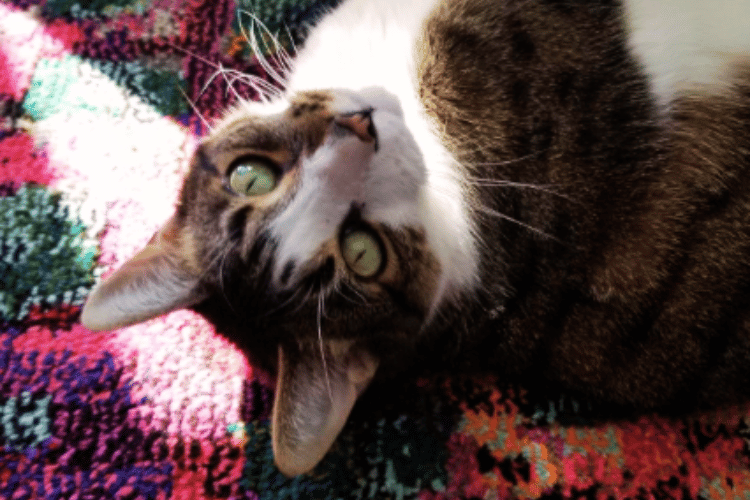
Understanding the genetics behind your cat's fur can also be enlightening when it comes to grooming. Certain coat colors and patterns may be linked to different types of hair and undercoat. For example, a long-haired cat with a thick undercoat might require more frequent grooming than a short-haired cat with a sleek, single-layer coat.
Recognizing these nuances helps cat owners tailor their grooming routine to suit their pet's specific needs, ensuring that the cat's coat remains lustrous and healthy, and that the cat's skin is protected from potential irritants.
The Impact of Seasonal Changes on Cat Grooming
As the seasons change, so do the grooming needs of your feline friend. During the warmer months, cats may shed more to keep cool, which means more frequent brushing might be necessary to manage your cat's fur and prevent hairballs. Conversely, in the colder months, cats grow a thicker undercoat for insulation, which can lead to matting if not properly maintained.
This is particularly true for long-haired breeds, whose luxurious locks are prone to tangles. Regular use of a slicker brush can help prevent mats and keep the cat's coat smooth.
Moreover, the change in seasons can also affect your cat's skin health. Dry winter air might cause flakiness and itching, while summer might bring about more oily skin and the potential for flea infestations. Adjusting your cat's grooming routine to include a suitable bathing schedule can help mitigate these issues.
While cats typically self-groom, an occasional bath can help cleanse the skin and coat, removing dirt and allergens that can cause discomfort. Always use a cat-specific shampoo to maintain the natural oils in your pet's body, ensuring their coat stays shiny and their skin remains healthy.
The Synergy of Bathing and Brushing in Cat Grooming
Bathing a cat is a topic that often comes with a bit of trepidation. Unlike bathing dogs, which generally tolerate water well, cats are known for their aversion to baths. However, there are times when bathing your cat is necessary, especially if they've gotten into something particularly messy or sticky.
When these rare occasions arise, it's important to use a gentle, cat-specific shampoo and to keep the experience as stress-free as possible. Bathing can help in loosening dead fur and undercoat, making the brushing process more effective.
After a bath, once your cat is dry, brushing becomes an essential step to remove any loosened cat's fur and prevent new tangles from forming. This is where tools like the self-cleaning slicker brush come in handy, as they can help to smooth out the cat's hair while collecting the loose fur in an easy-to-clean manner.
Regular brushing not only keeps your cat's coat looking pristine but also distributes natural oils across your pet's body, promoting healthier skin and a more lustrous coat. Combining bathing with brushing can significantly enhance the grooming process for your feline friend.
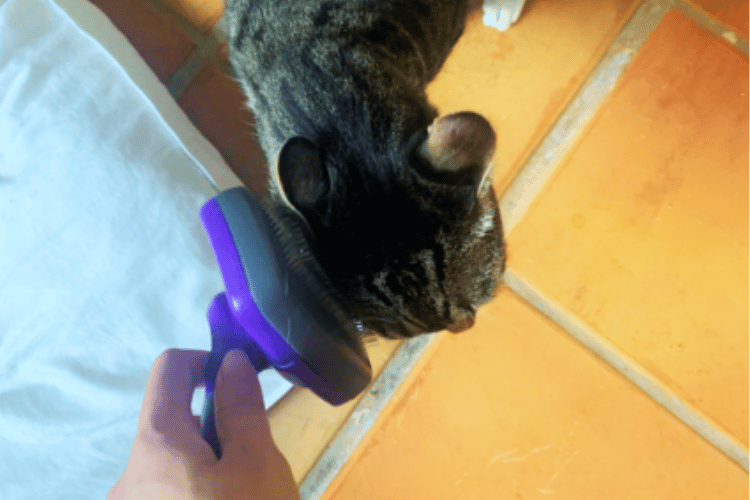
The Psychological Effects of Grooming on Cats
Grooming is not just a physical necessity for cats; it also has psychological benefits. Regular grooming sessions are opportunities for pet owners to bond with their cats, creating a sense of trust and security.
For cats, the sensation of being groomed can be reminiscent of the nurturing they received from their mothers as kittens. This can be especially true when using tools that mimic the gentle touch of a cat's tongue, such as self-grooming brushes that cats can use to groom themselves.
In multi-cat households, grooming can also serve as a social activity that helps to establish and maintain the hierarchy within the group. When cats groom each other, it's a sign of affection and acceptance, often referred to as 'allogrooming'.
By incorporating grooming into your routine, you're essentially speaking your cat's language, reinforcing your role as a caregiver. This can help alleviate any anxiety or discomfort your cat may feel, not just during grooming but in their daily life, contributing to their overall well-being and happiness.
The Evolution of Self-Grooming Tools for Cats
The world of pet grooming is ever-evolving, and self-grooming tools are a testament to this progress. These innovative devices allow cats to take charge of their grooming, providing them with the opportunity to rub and scratch against specially designed bristles that mimic the sensation of being groomed. This not only helps to maintain the cat's coat by removing loose hair and stimulating the skin but also offers a pleasurable experience that can reduce stress and promote relaxation.
For pet owners, self-grooming tools are a convenient addition to their cat's grooming routine. They can be attached to corners or furniture, encouraging the cat to self-groom even when their human isn't around to help.
This is particularly beneficial for cats that are less tolerant of being brushed or for those with a busy pet parent. By incorporating self-grooming tools into your home, you're providing your cat with a way to maintain their fur and contribute to their overall hygiene and happiness.
The Art of Bathing: When and How to Bathe Your Cat
While cats are known for their self-grooming habits, there are times when a bath is necessary, especially for long-haired cats that may get their fur tangled or soiled. Bathing your cat can be a daunting task, but with patience and the right approach, it can become a positive experience for both of you. It's important to use a cat-specific shampoo and to introduce your cat to water gradually, ensuring the temperature is comfortable and the environment is calm to avoid stress.
For short-haired cats, bathing might be less frequent but just as important, particularly if they've gotten into something sticky or smelly. After a bath, using a slicker brush can help remove any loose hair and prevent mats from forming as your cat's fur dries. Remember, the key to successful bathing lies in making it a rare and gentle event, complemented by regular brushing to maintain your cat's undercoat and overall coat health.
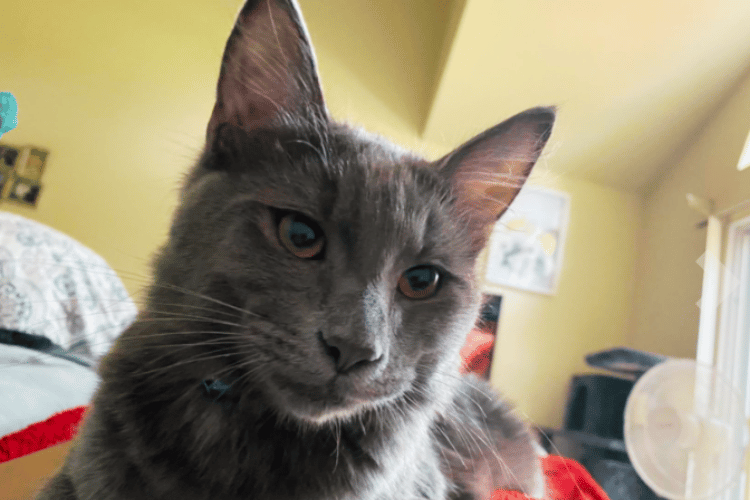
The Importance of Regular Bathing for Cats
While cats are known for their self-grooming habits, there are times when a bath can be beneficial for your feline friend. Bathing a cat can help remove excess oils, dander, and shed fur that self-grooming alone may not address. This is particularly true for cats that have gotten into something sticky or smelly.
However, unlike bathing dogs, which may be more accustomed to water, bathing cats should be done with care to avoid causing stress or anxiety. Using a cat-specific shampoo and ensuring the water is a comfortable temperature can make the experience more pleasant for your cat.
Regular bathing can also be an opportunity to check your cat's skin for any issues such as dryness, parasites, or irritations. For a long-haired cat, bathing might help in managing the cat's coat, especially during peak shedding seasons when cats shed more.
It's important to thoroughly dry your cat after a bath to prevent chills and to brush out any tangles that may have formed during the washing process. For cats that are resistant to water, waterless shampoos or grooming wipes can be a good alternative to keep your cat's entire body clean without the stress of a traditional bath.
The Science of Shedding: Managing Your Cat's Fur
Cats naturally shed their fur, and this process is essential for the health of their cat's coat. Shedding allows cats to remove old and damaged hair, and it can vary in frequency and volume depending on the breed and the season. For cat owners, managing shedding is a key aspect of grooming.
Using a brush with boar bristles or soft bristles can effectively capture all the fur that your cat sheds, keeping your home cleaner and your cat's fur tidier.
Regularly brushing your cat regularly not only manages shedding but also helps to prevent hairballs, which can be a nuisance for both the cat and the owner. Brushes designed to target the cat's undercoat can be particularly useful for this, as they can reach loose fur that the cat might otherwise ingest during self-grooming. Remember, the best brush for managing shedding is one that your cat feels comfortable with and that does the job of capturing all the fur without irritating your pet's body.
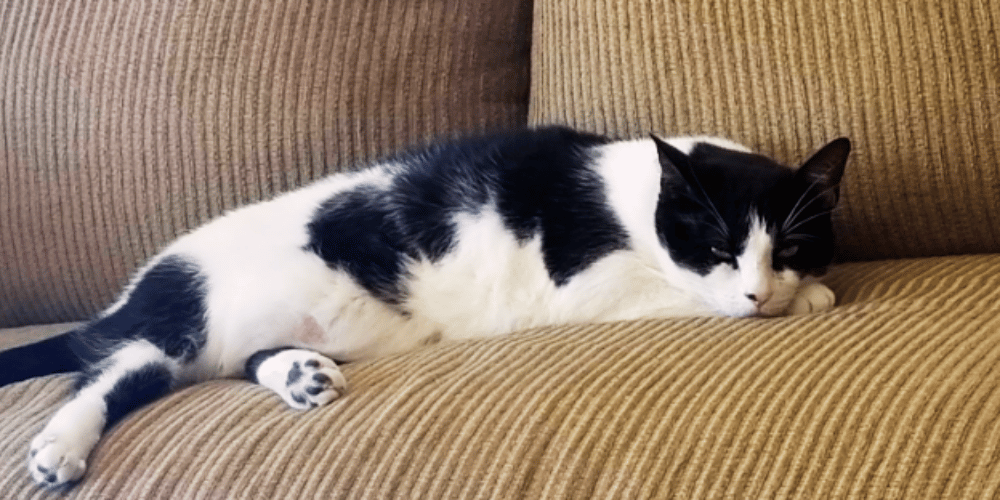
Regular Brushing and Cat Health
Regular brushing not only keeps your cat's coat free of loose hairs but also stimulates blood circulation and distributes natural oils for healthy skin. For many cats, grooming sessions can be a bonding experience that they grow to love.
Recognizing When Your Cat is Uncomfortable
It's important to be attentive to your cat's behavior during grooming. If your cat shows signs of discomfort, it may be time to try a different brush or adjust your technique. Cats will often communicate through their body language if something is causing them pain.
The Importance of Grooming for Younger Cats
Introducing grooming to younger cats can help them become accustomed to the process. Starting with a gentle cat brush and progressing to more specialized tools as they grow can make grooming a positive experience for both you and your cat.
The Benefits of Self Grooming Tools
Self grooming tools, such as grooming arches, allow cats to take care of their own fur maintenance to some extent. These can complement regular brushing sessions and help reduce the amount of loose fur around your home.
Caring for Your Cat's Entire Body
When grooming your cat, it's important to address all areas of their body, including the undercoat. Tools like the Furminator Undercoat Deshedding Tool are designed to reach the undercoat without harming the topcoat or the cat's skin.
The Convenience of a Self Cleaning Slicker Brush
A self cleaning slicker brush can make the grooming process easier for both you and your cat. With features like a fur ejector button, these brushes allow for quick and easy removal of collected hair, reducing the time spent cleaning the brush.
How to Keep Your Cat's Coat Healthy
In addition to regular brushing, keeping your cat's coat healthy involves a balanced diet, adequate hydration, and occasional bathing. While bathing cats isn't always necessary, it can help remove excess hair and keep their coat shiny.
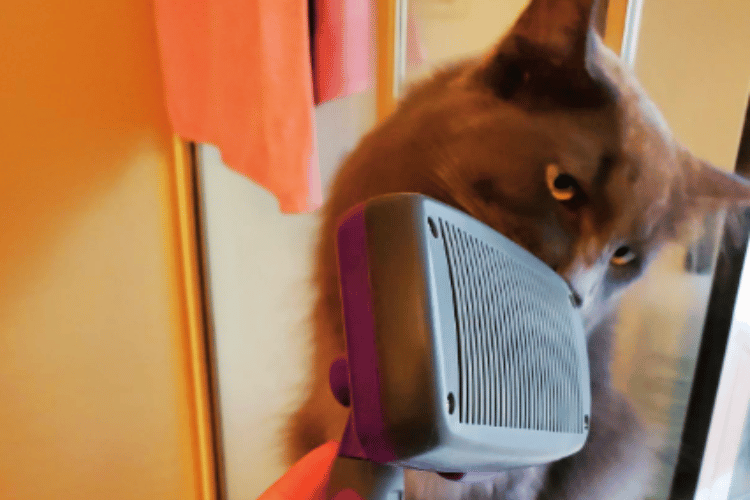
Summary
Slicker brushes can be a comfortable and effective grooming tool for cats when used with the right technique and consideration for the cat's coat and skin sensitivity. It's important to choose the best cat brushes that suit your cat's needs and to be mindful of their comfort during grooming sessions.
Regular grooming not only helps remove loose hair and prevent mats but also promotes a healthy coat and skin. By being attentive to your cat's reactions and preferences, you can ensure a pain-free grooming experience that both you and your cat will appreciate.
FAQ Section
How often should I brush my cat with a slicker brush?
The frequency of brushing depends on your cat's coat type. Long hair cats may require daily brushing to prevent mats, while short haired cats might only need brushing a few times a week. Always monitor your cat's coat condition and adjust the grooming schedule accordingly.
Can slicker brushes cause skin irritation for cats?
If used too aggressively, slicker brushes can cause skin irritation. It's crucial to use gentle strokes and not press too hard against the cat's skin. If your cat has very sensitive skin, consider using a softer brush.
What should I do if my cat hates being brushed?
If your cat dislikes being brushed, try to make the experience more positive. Start with short sessions using a gentle brush, offer treats as a reward, and gradually increase the brushing time as your cat becomes more comfortable. If your cat continues to resist, consult a professional groomer for advice.
Thank you for visiting LegitLists we hope this helps you make a legitimate choice!






